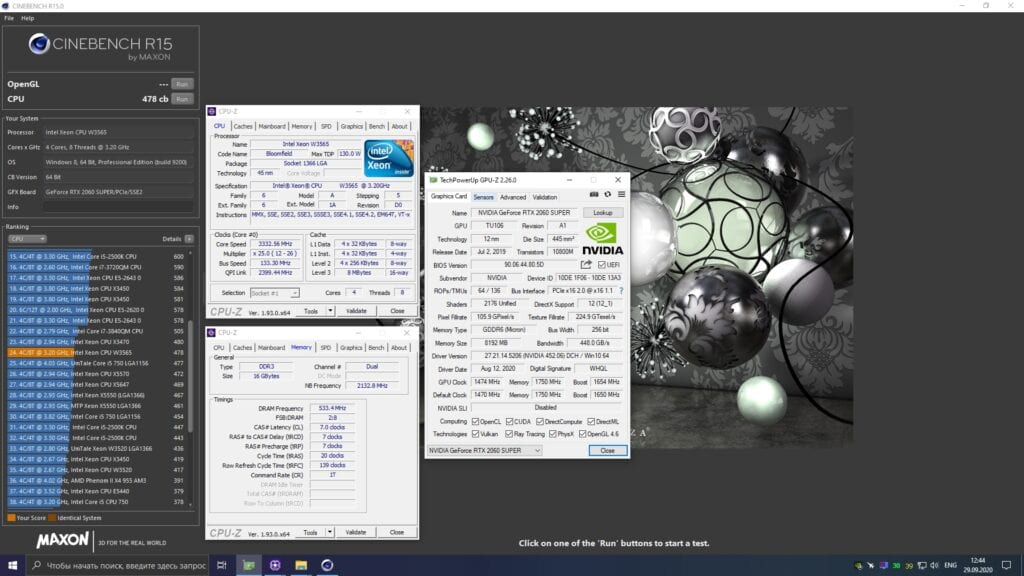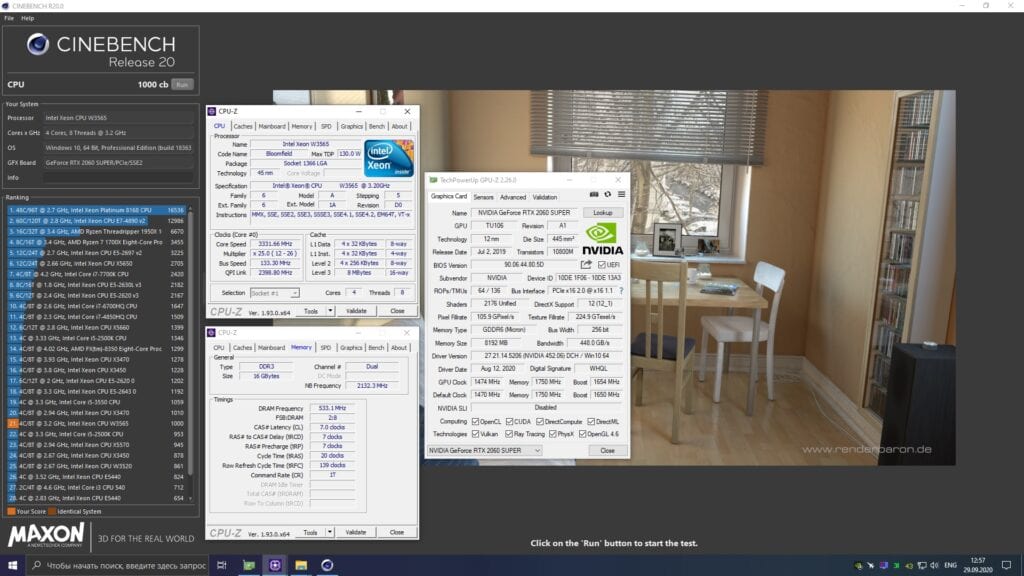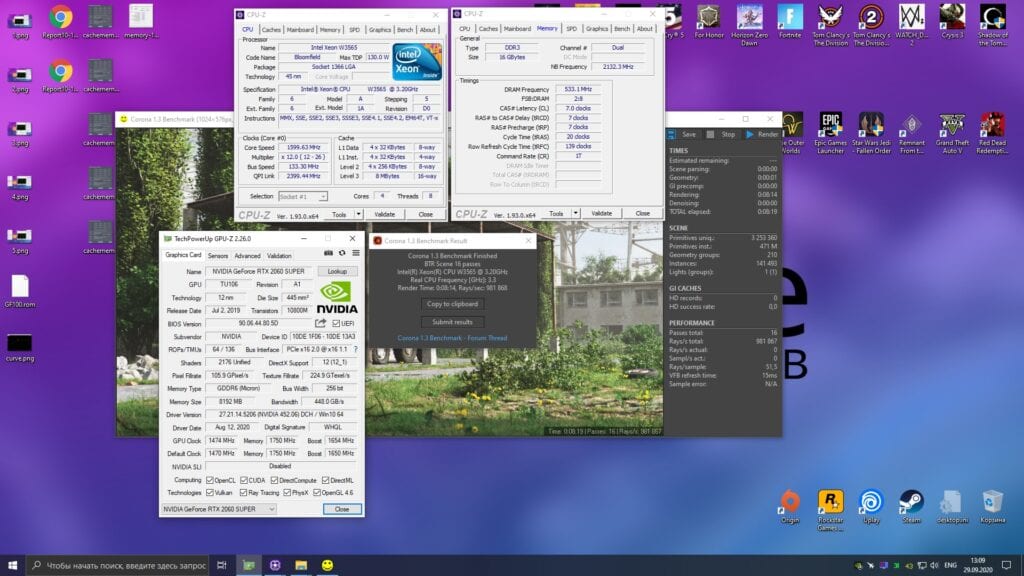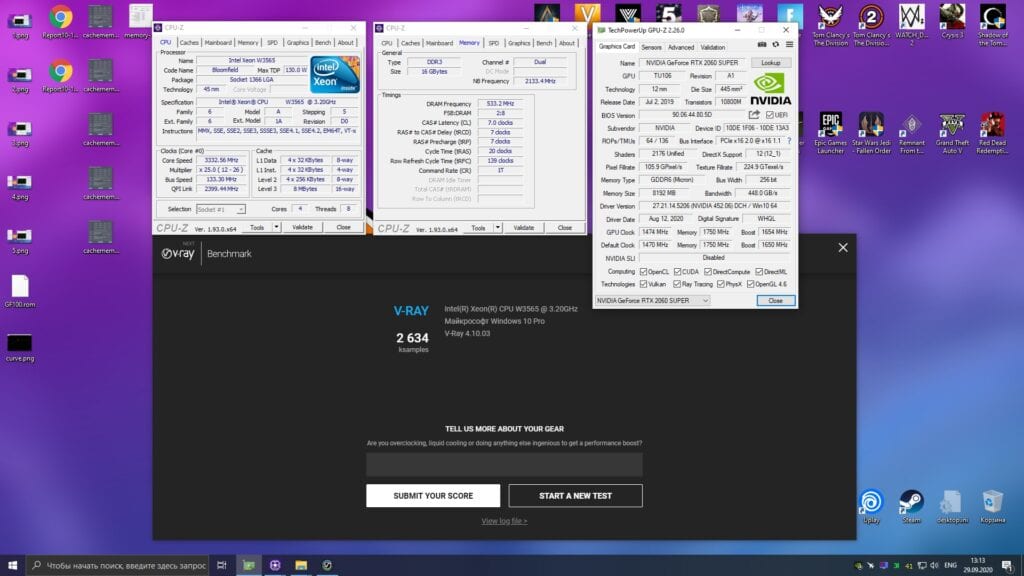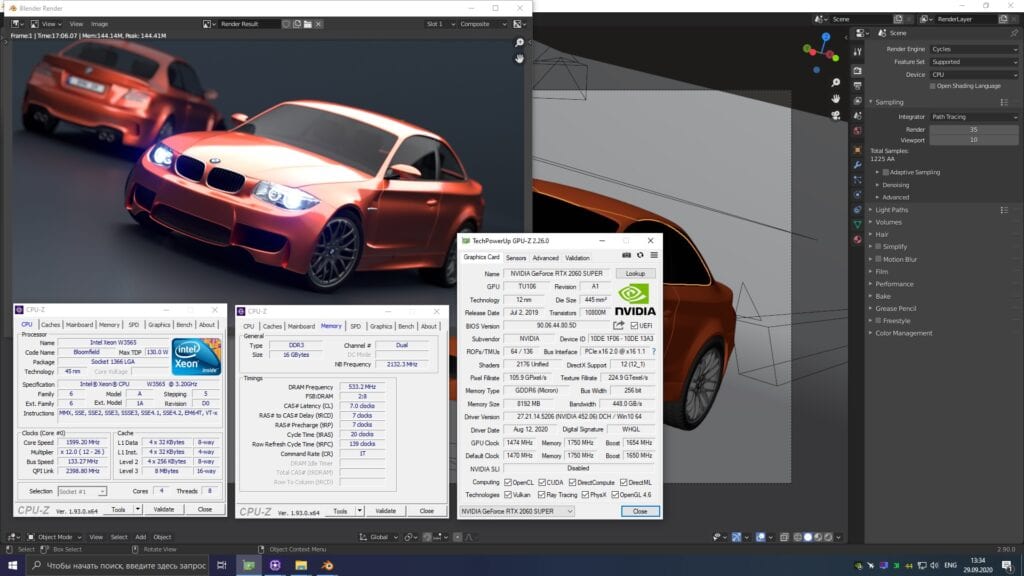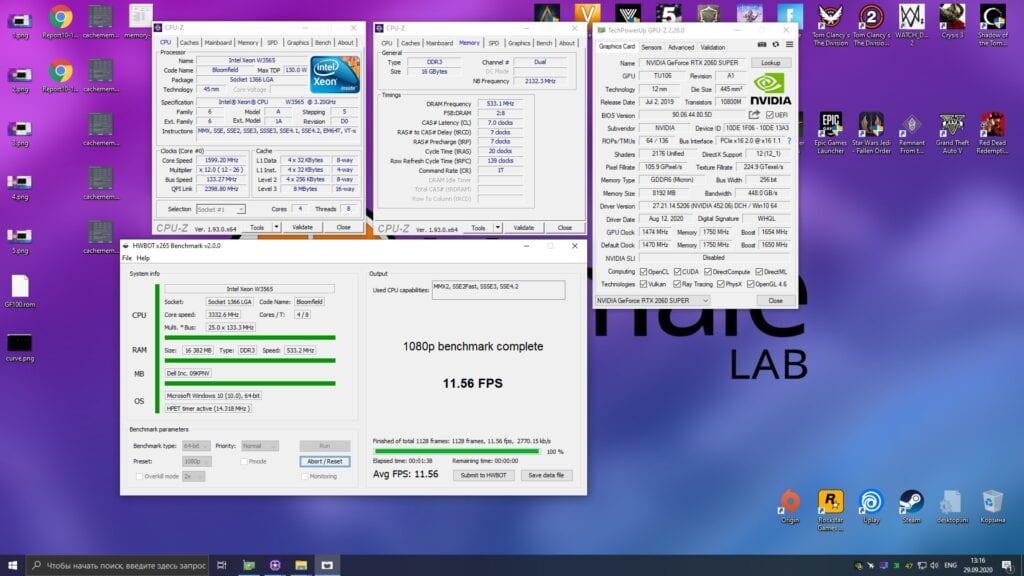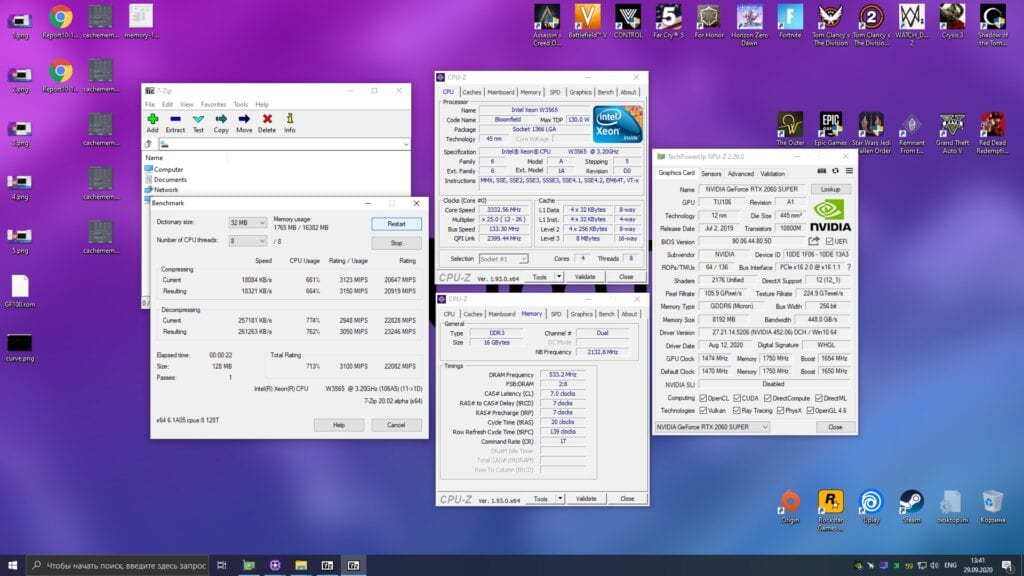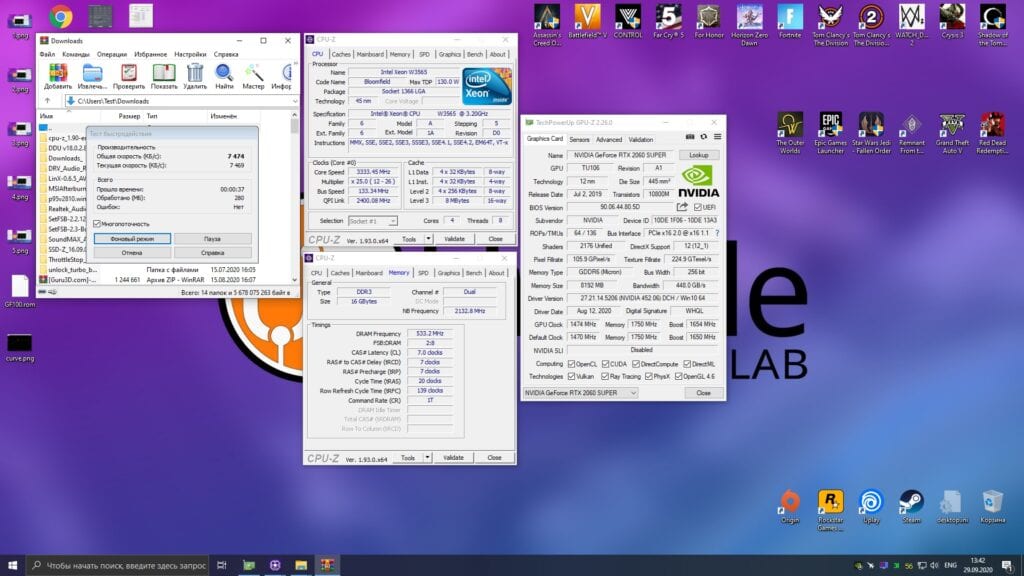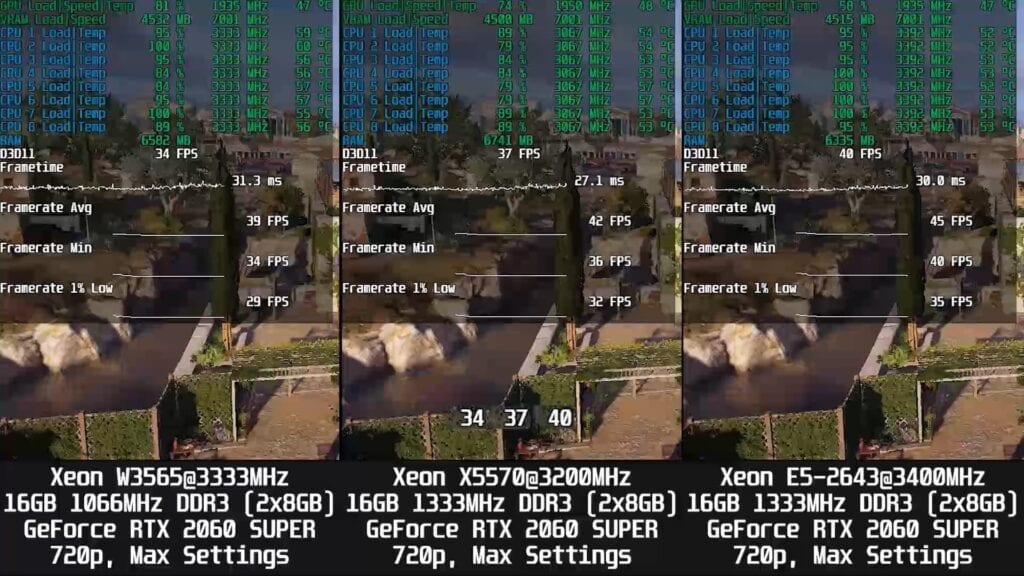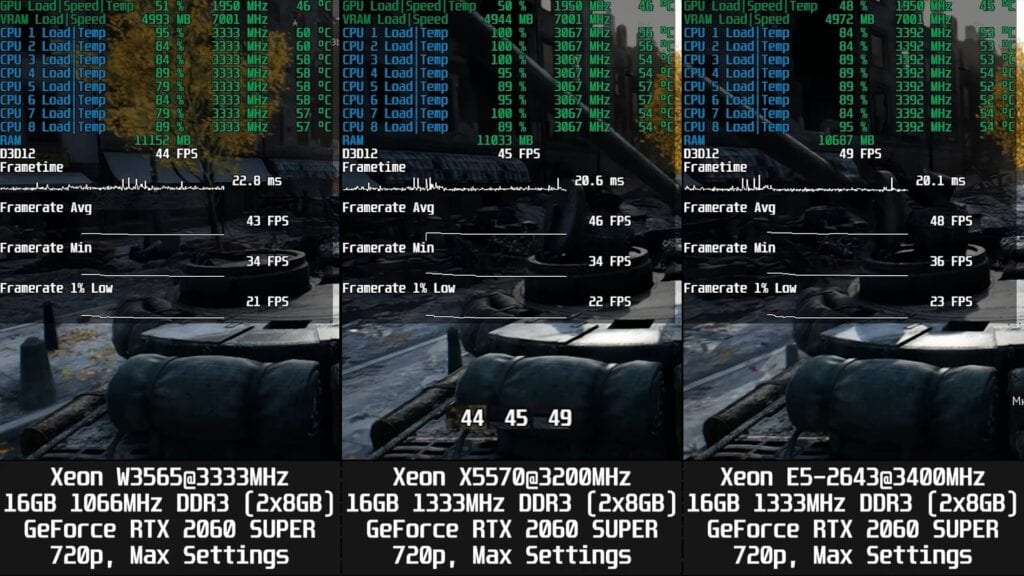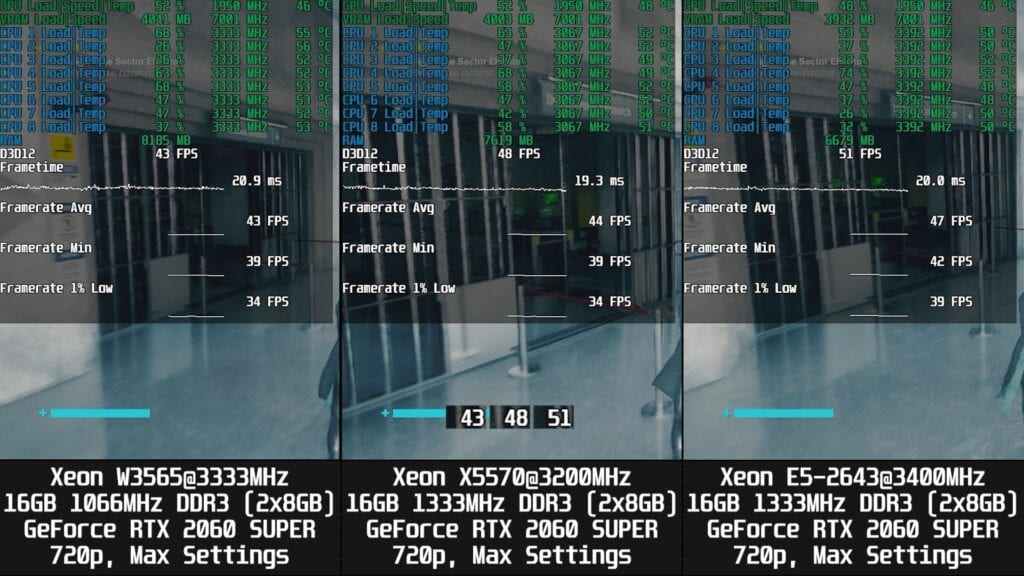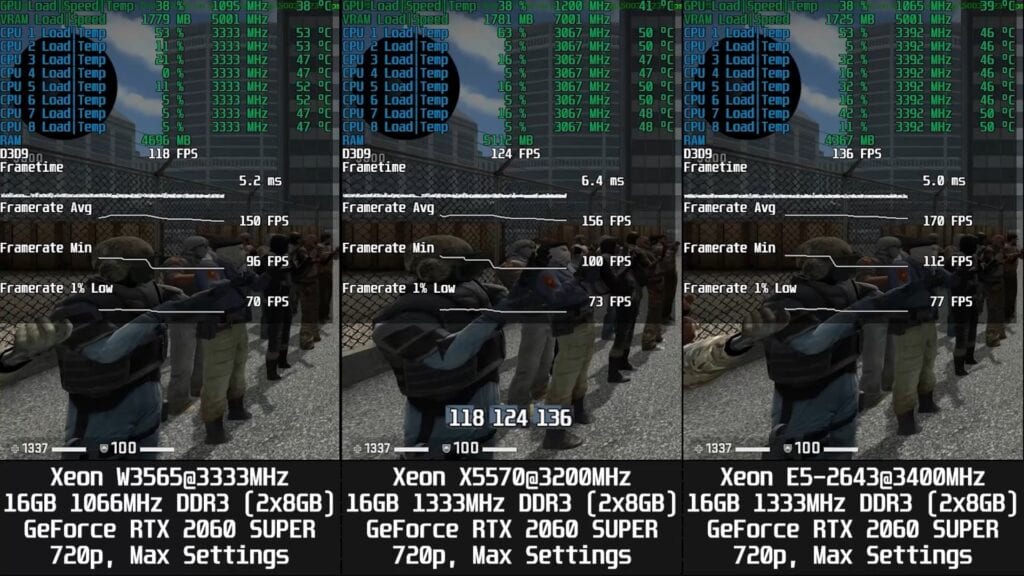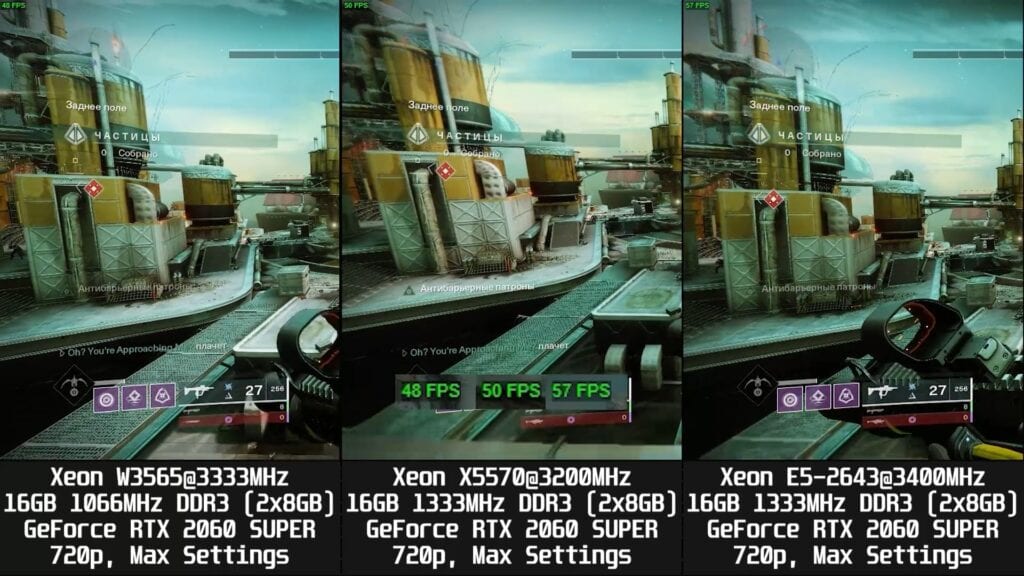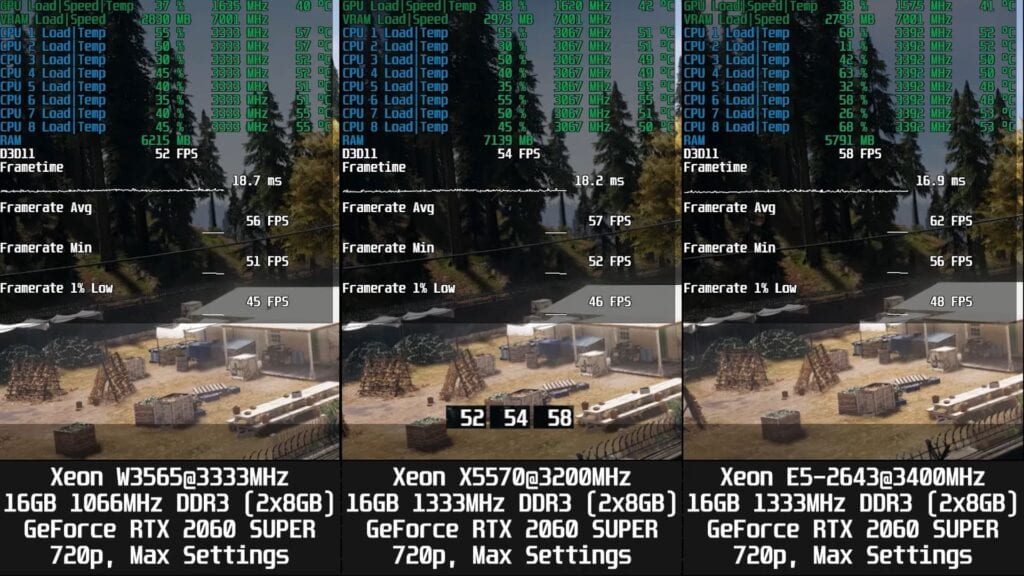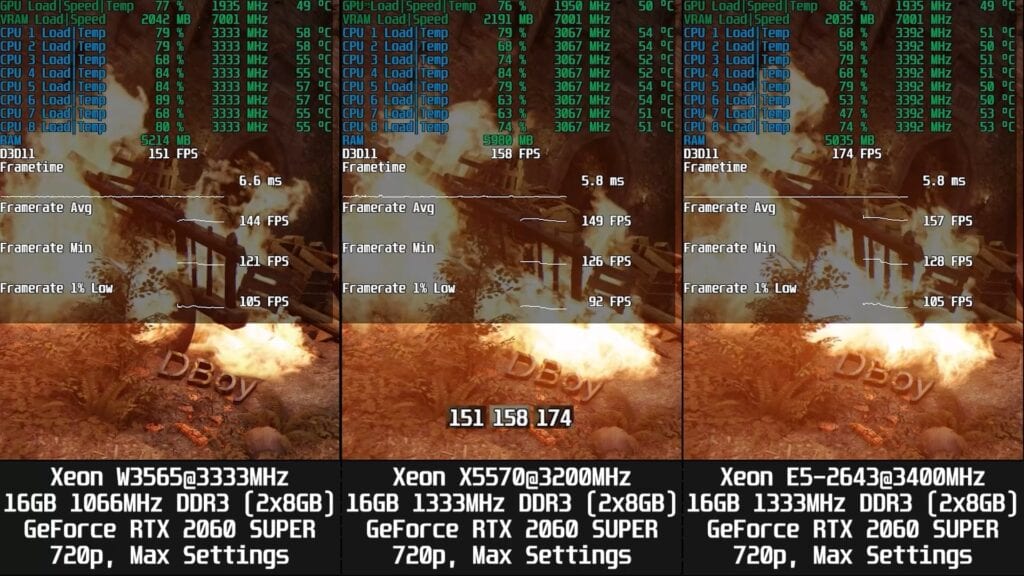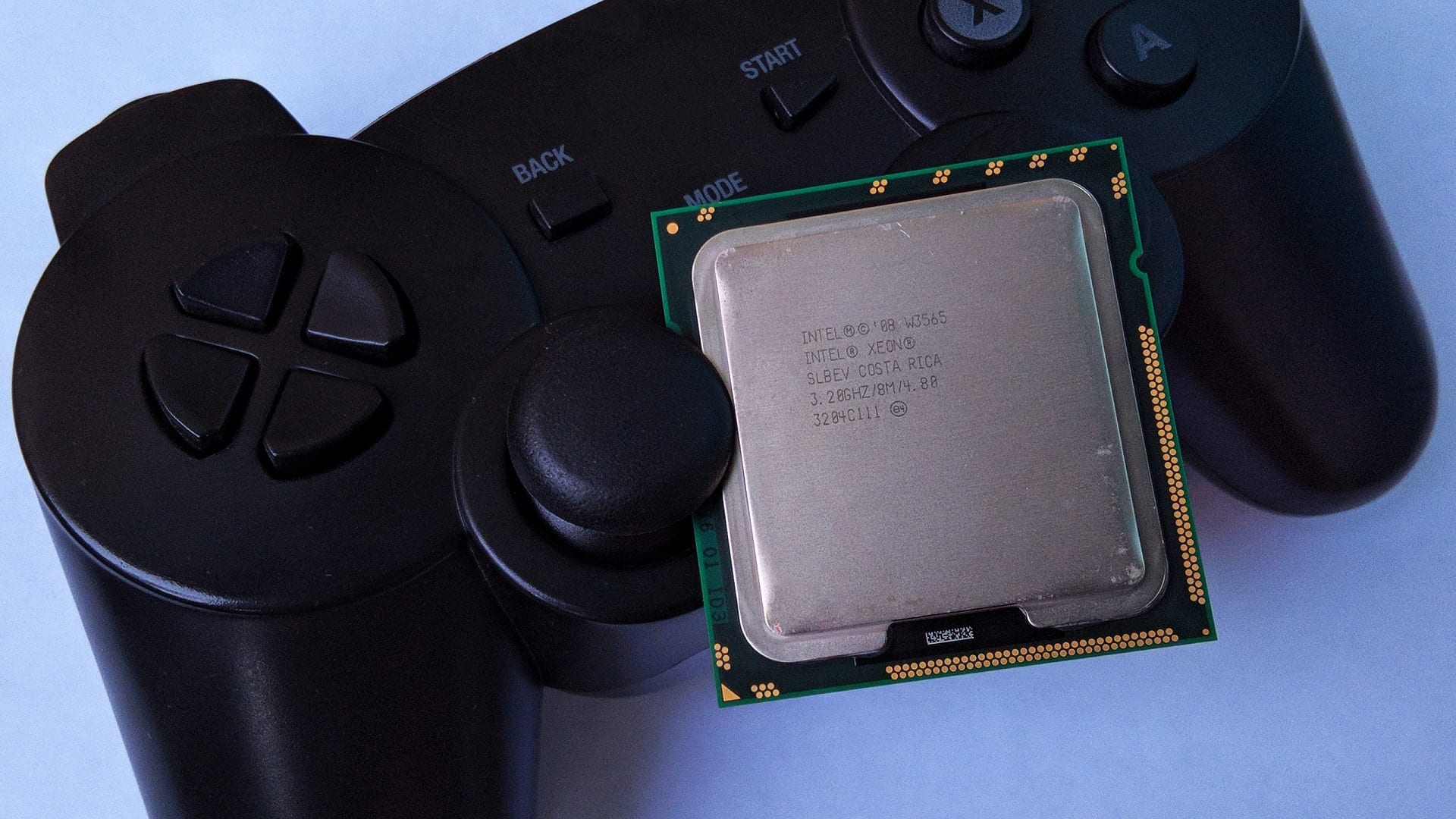
The Intel Xeon W3565 chip is one of the highest-frequency representatives of the Nehalem architecture based on the 45-nm Bloomfield crystal, and also, in combination, it is an analog of the desktop Core i7-960 chip. It is because of these two factors that this chip is often chosen for building super-budget gaming or working system. Nevertheless, this CPU has several rather negative features: Some of them lie on the surface – like support for only slow DDR3 1066MHz RAM, while others, like the extremely low frequency of the memory controller and L3 cache, which is only at 2133MHz, are hiding by Intel for some reason. And as you know, it is the frequencies of RAM and L3 cache that have the greatest impact on the final gaming and near-gaming performance of the central processor.
In the case of the Core i7-960 chip, everything is generally clear – if the board does not support Intel Xeon processors, then the user will not have much choice. However, in the case of the owner of a motherboard with support for server processors, the choice of the Xeon W3565 (or its analogs such as W3530/W3550 and so on) is not entirely clear.
I will try to explain: next to it, literally in the neighboring, really server branch, there is a Xeon X55xx series CPU. And here they have, at least starting from the X5550 chip, the frequency of the memory controller built into the processor is at around 2667MHz, and the RAM support is set to more significant 1333MHz!
In general, this would be the end of the discussion of the reasonableness of the Xeon W3565 processor, if not for one thing: the Nehalem architecture is quite old and the above-described advantage of a high-frequency CP (memory controller) and a faster L3 cache in the end may remain only on paper. Therefore, I nevertheless decided to conduct research and find out in practice whether there is a difference in performance between the CP at a frequency of 2133MHz and 2667MHz, as well as RAM at 1066MHz and 1333MHz using the example of Intel Xeon X5570 and Xeon W3565 processors.
Here is a screenshot of the comparison of Intel Xeon X5570 processors with Core i7-960 and Xeon W3565:

Of the really significant differences between the Xeon W3565 chip and the Core i7-960, we can only note the lack of support for RAM with ECC error correction. However, this does not in any way affect the final performance. Therefore, the data obtained during this bench-session of the Xeon W3565 can be safely projected onto the desktop version in the face of the Core i7-960.
But the X5570 is already quite different from its brothers in architecture: firstly, as I wrote above, it supports RAM with a frequency of 1333 MHz. Secondly, the frequency of its QPI bus is set at 3200 MHz (6.4 GT/s), and thirdly, the maximum temperature of the X5570 is pushed back to 75 degrees Celsius.
However, in addition to many advantages, the Xeon X5570 also has one small drawback: the maximum frequency of four cores cannot exceed 3200 MHz, while in the same W3565 it reaches 3333 MHz. But whether this 133MHz frequency gap can bring victory to the protagonist of this article is the question to which we will answer below.
Welcome to the third article of the September bench session!
Processor
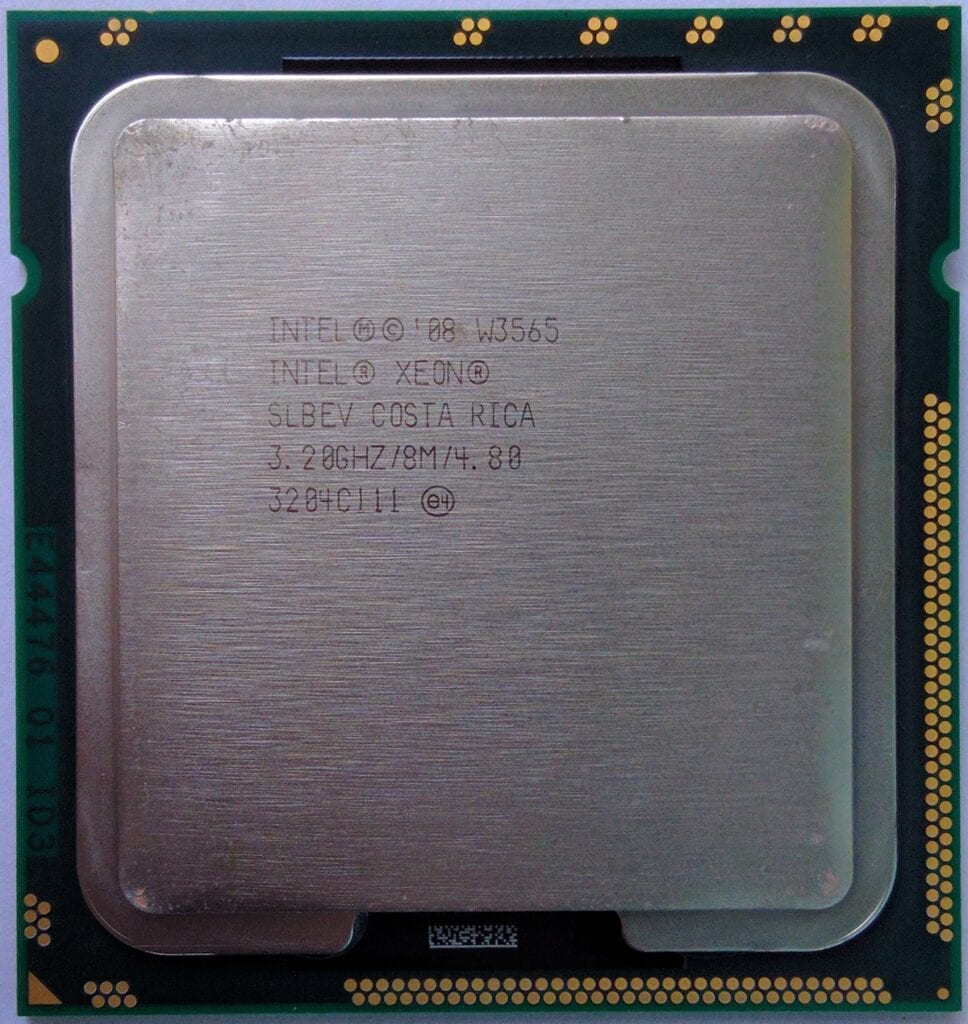
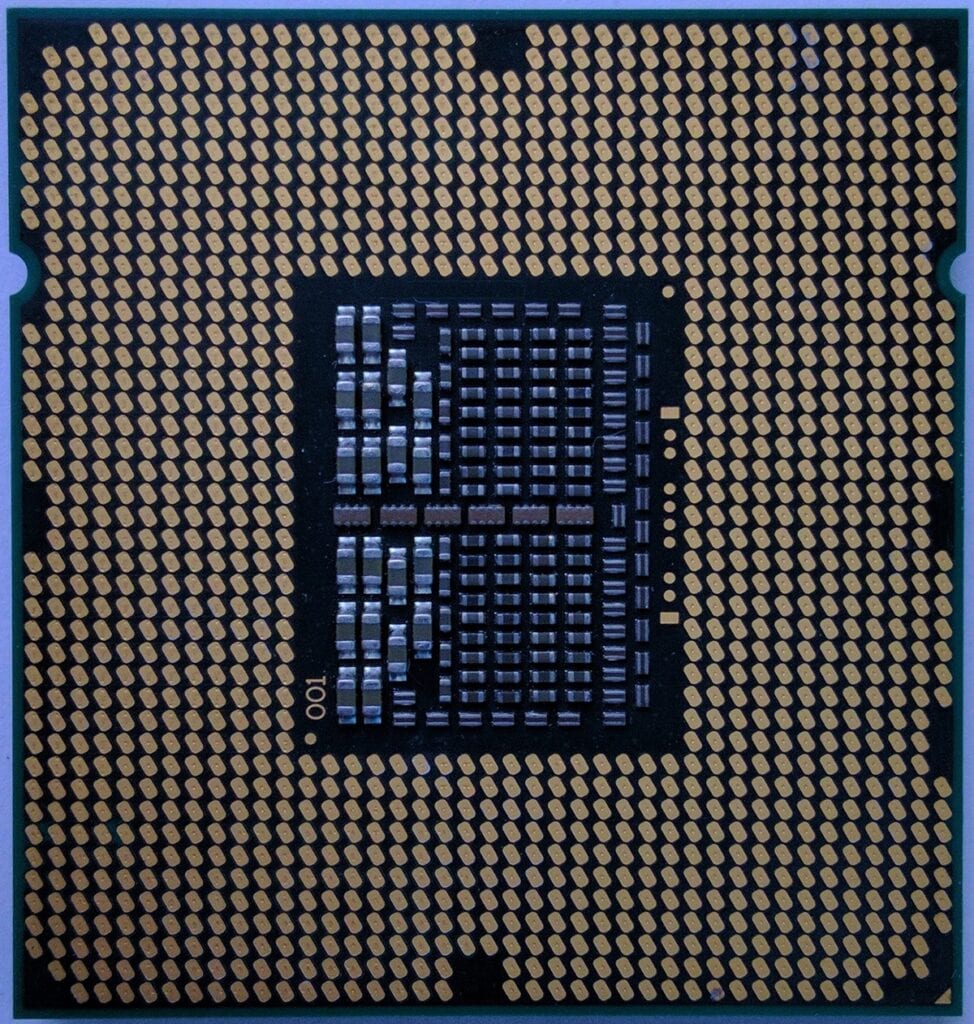
Marking our test specimen SLBEV; the chip is produced in Costa Rica, and its base frequency is 3200MHz.
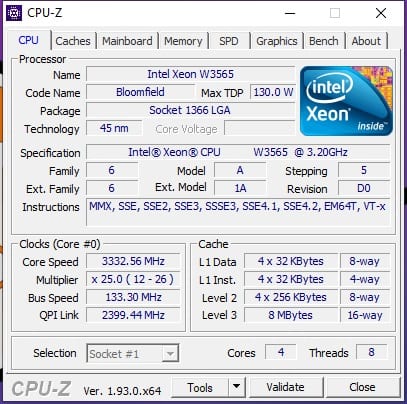

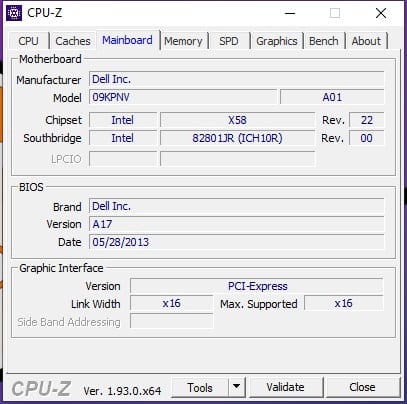


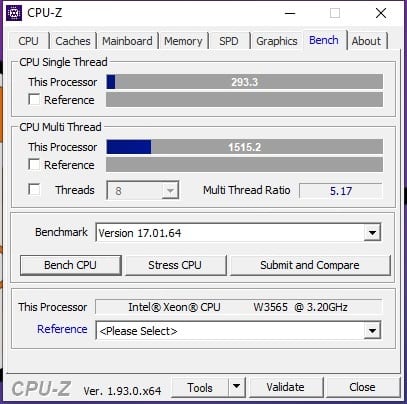
The Intel Xeon W3565 processor is based on a 45nm, 4-core, 8-thread Bloomfield crystal. This chip is designed to be installed in motherboards with an LGA 1366 socket, its maximum allowable turbo boost frequency is 3400MHz, however, for all cores, it cannot exceed 3333MHz. The QPI bus is 2400MHz (4.8GT/s).
The Xeon W3565 has 256KB L2 cache per core and a shared 8MB L3 cache. The speed of the memory controller built into the processor of the W3565 is fixed at around 2133MHz (the L3 cache also works on it), and the maximum RAM frequency is limited to DDR3-1066MHz.
Table with technical characteristics of all tested CPUs:
| Processor | Xeon W3565 | Xeon X5570 | Xeon X5660 | Xeon E5-2643 | Xeon E5-2620 | Xeon E5-2620 v3 | Xeon E5-2630L v3 |
| Connector | LGA 1366 | LGA 1366 | LGA 1366 | LGA 2011 | LGA 2011 | LGA 2011 v3 | LGA 2011 v3 |
| Base frequency | 3200MHz | 2933MHz | 2800MHz | 3300MHz | 2000MHz | 2400MHz | 1800MHz |
| Max frequency | 3400MHz | 3333MHz | 3200MHz | 3500MHz | 2500MHz | 3200MHz | 2900MHz |
| Max frequency for all cores | 3333MHz | 3200MHz | 3066MHz | 3400MHz | 2300MHz | 2600MHz | 2200MHz |
| Frequency of all cores in tests | 3333MHz | 3200MHz | 3066MHz | 3400MHz | 2300MHz | 3200MHz | ~2700MHz |
| Number of Cores | 4 | 4 | 6 | 4 | 6 | 6 | 8 |
| Number of Threads3 | 8 | 8 | 12 | 8 | 12 | 12 | 16 |
| Technical process | 45nm | 45nm | 32nm | 32nm | 32nm | 22nm | 22nm |
| L2 cache (per core) | 256KB | 256KB | 256KB | 256KB | 256KB | 256KB | 256KB |
| L3 cache (overall) | 8MB | 8MB | 12MB | 10MB | 15MB | 15MB | 20MB |
| L3/MC frequency | 2133MHz | 2666MHz | 2666MHz | Related to core frequency | Related to core frequency | 3000MHz | 2900MHz |
| TDP | 130W | 95W | 95W | 130W | 95W | 85W | 55W |
| MC RAM | 3-channel | 3-channel | 3-channel | 4-channel | 4-channel | 4-channel | 4-channel |
| RAM support | DDR3-1066MHz | DDR3-1333MHz | DDR3-1333MHz | DDR3-1333MHz | DDR3-1333MHz | DDR4-1866MHz | DDR4-1866MHz |
| Price (for 2020.10.13) | ~3$ | 8$ | 13$ | 15$ | ~5$ | 20$ | 25$ |
You can find more detailed technical characteristics, appearance and a brief overview of the rest of the presented CPUs in the first and second materials of the September bench session.
Test setup:
- Processors — Xeon E5-2620, Xeon E5-2620 v3, Xeon E5-2630L v3, Xeon E5-2643, Xeon W3565, Xeon X5570 and Xeon X5660;
- Cooling — Cooler Master Hyper 212 Black Edition (RR-212S-20PK-R1);
- RAM for LGA 1366 — 2 x 8GB HyperX Genesis Na’Vi Edition (KHX16C9C2K2/8) with a total volume of 16GB;
- RAM for LGA 2011 — 2 x 8GB Micron MT36JSF1G72PZ-1G4M1HF with a total volume of 16GB;
- RAM for LGA 2011 v3 — 4 x 4GB G.SKILL DDR4@1866MHz F4-2400C15S-4GNT with a total volume of 16GB (10-10-10-24 timings);
- Motherboard LGA 2011 — DELL T3610 (09M8Y8);
- Motherboard LGA 2011 v3 — Kllisre X99-D8 (AD12) with a modified BIOS (Unlock Turbo Boost, as well as the ability to control timings);
- Motherboard LGA 1366 — DELL T3500 (09KPNV);
- Video card — KFA2 GeForce RTX 2060 SUPER 8GB (Power Limit 115%);
- SSD — KINGSTON 120GB SA400S37120G (Windows 10 1903/Apps);
- Hardware — Seagate 2TB ST2000DM008-2FR102 (Games);
- Power supply — Chieftec GPS-1250C.
Software:
- Windows 10 Pro v1909 x64;
- CPU-z v1.93.0 x64;
- AIDA64 v6.10.5200;
- NVIDIA Driver v. 452.06;
- Cinebench R15.38;
- Cinebench R20.060;
- xNormal 3.19.3.39669 x64 (NM Map anti-aliasing x4, AO Map anti-aliasing x1);
- Blender 2.90.0;
- HWBot x265 Benchmark v2.0.0;
- WinRar v5.91 x64;
- 7-Zip v20.02 alpha x64.
Games and graphics settings:
For more visual settings for the quality of graphics in games, you can get acquainted with the video recording of the testing of the Xeon W3565 processor, which is located at the end of this article.
Testing in benchmarks and applications
First, let’s take a look at the metrics of the most basic test applications, and then move on to real-world tasks and software packages.
Overall performance:
CPU-z Benchmark

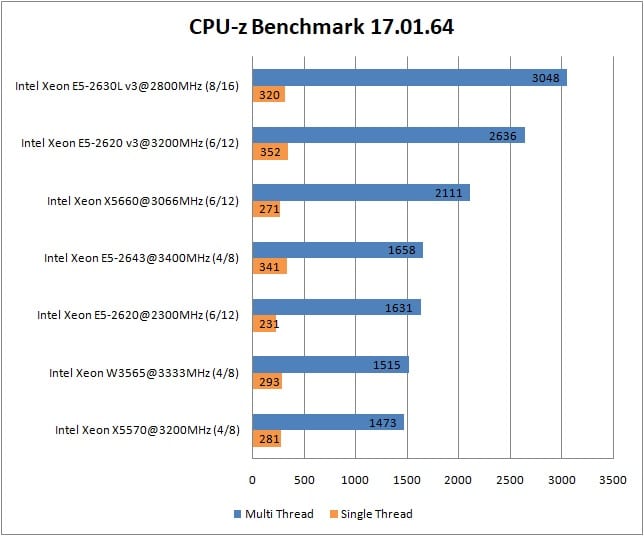
Rendering, benchmarks:
Cinebench R15
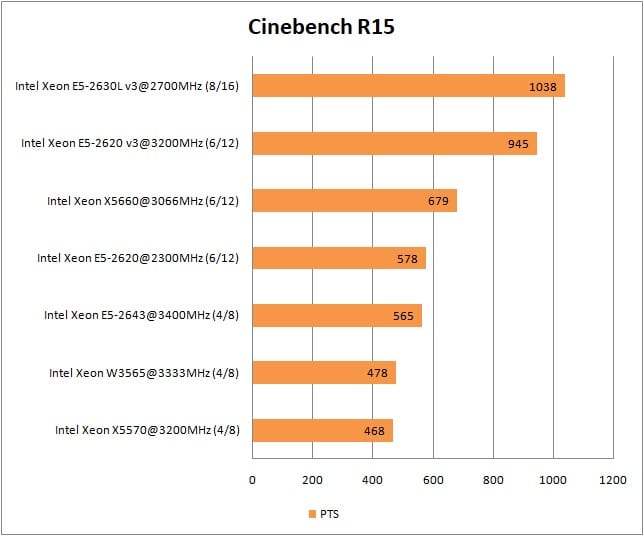
Cinebench R20
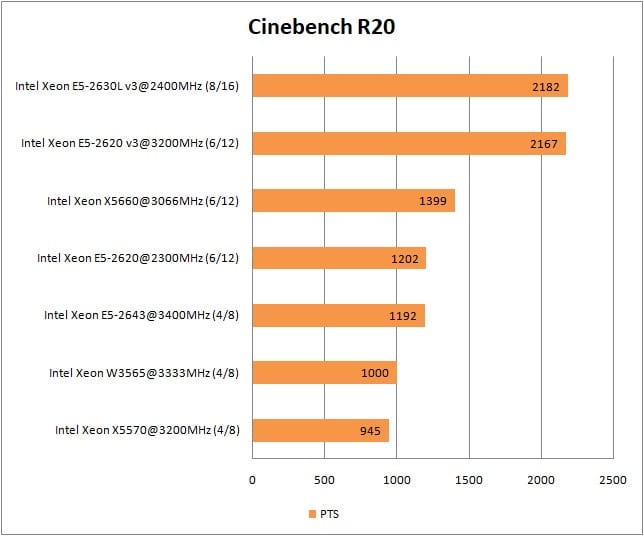
Corona Render 1.3
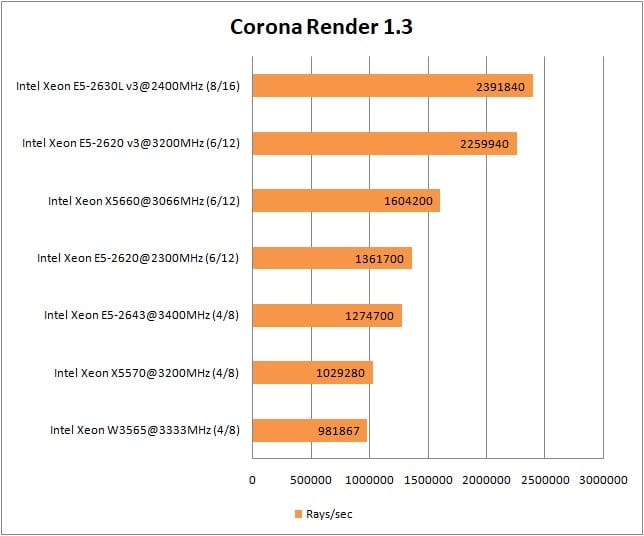
V-Ray Render Benchmark
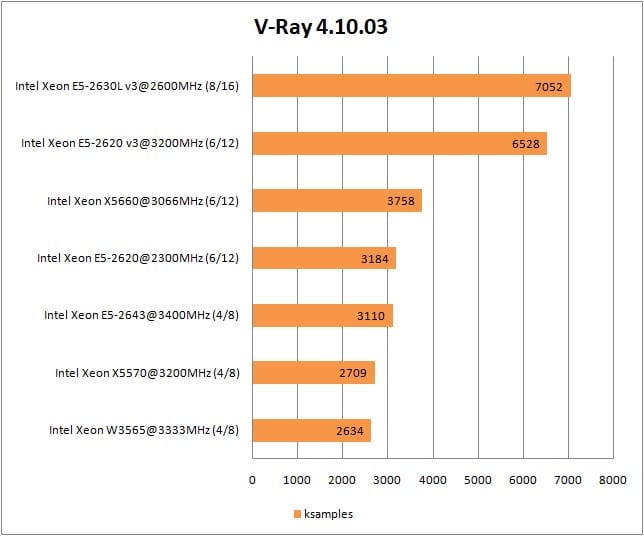
Rendering, real tasks:
Blender
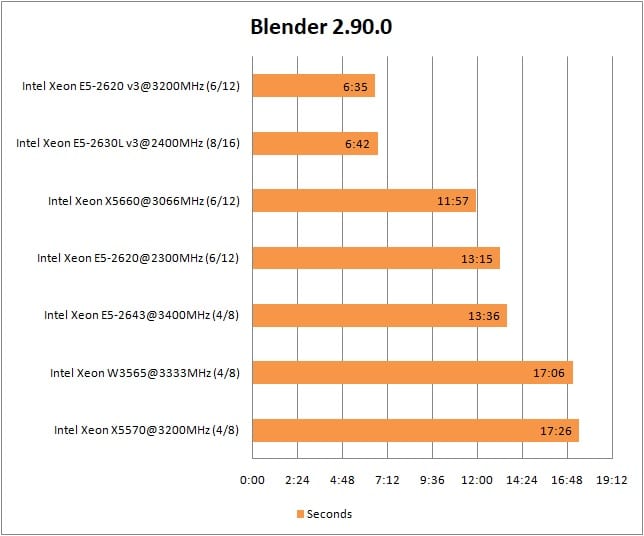
xNormal

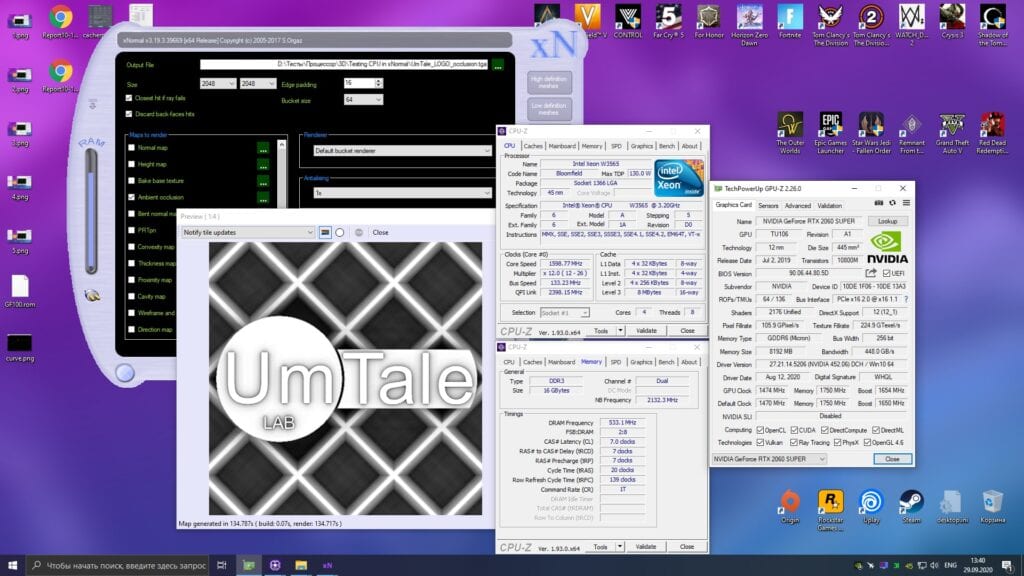
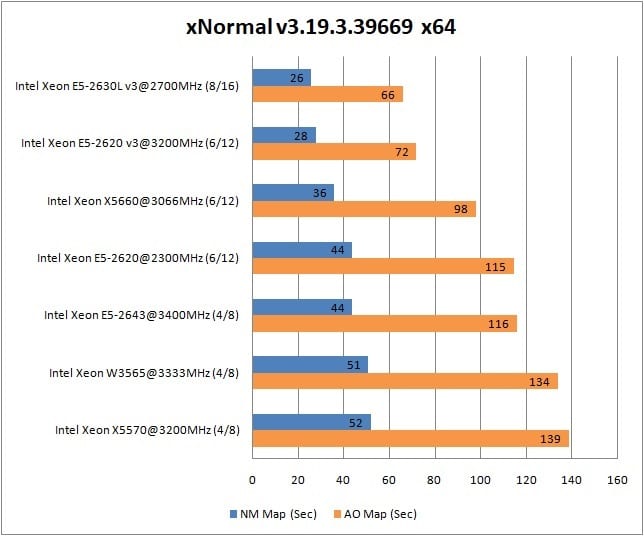
Video encoding
HWBot x265 Benchmark, 1080P
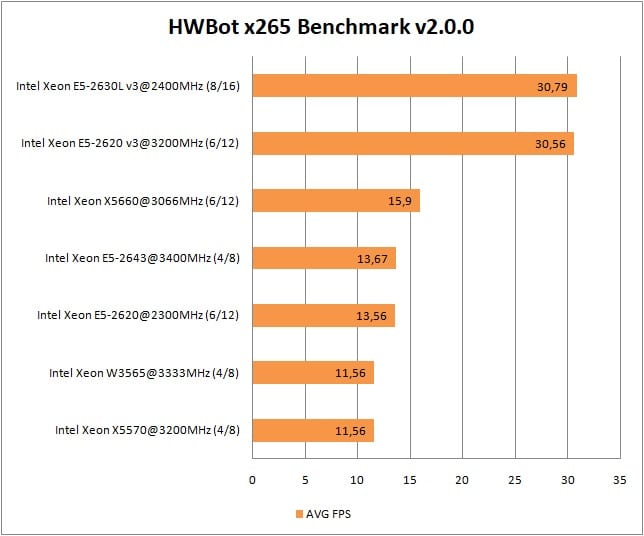
Archiving
7-Zip
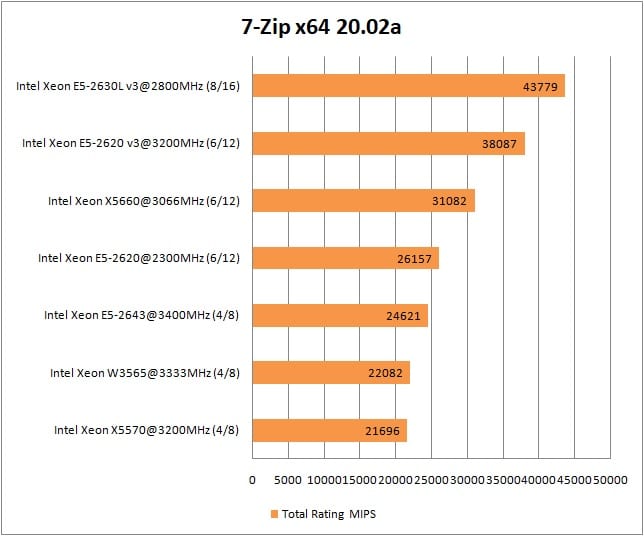
WinRar
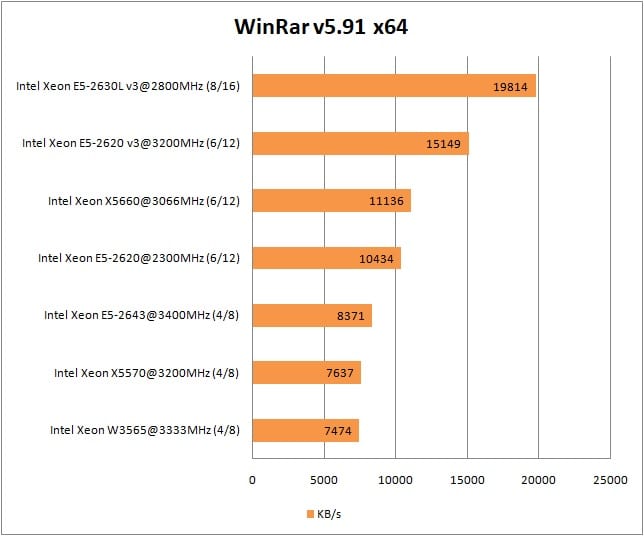
| Tests: | Xeon X5570 | Xeon W3565 |
| CPU-z Benchmark | – | + |
| Cinebench R15 | – | + |
| Cinebench R20 | – | + |
| Corona Render 1.3 | + | – |
| V-Ray Render Benchmark | + | – |
| Blender | – | + |
| xNormal | – | + |
| HWBot x265 Benchmark, 1080P | ~ | ~ |
| 7-Zip | – | + |
| WinRar | + | – |
So, in 6 out of 10 software tests, the W3565 chip turned out to be the winner and only lost in 4 tests. Nevertheless, if we talk specifically about real tasks, and not about benchmarks, then the X5570 and W3565 have actual parity: in Corona Render 1.3, V-Ray Render Benchmark, and WinRar, the X5570 took the lead, and in Blender, xNormal and 7-Zip the first was the W3565. Even more remarkable, in the HWBot x265 Benchmark, 1080P, both processors showed literally identical FPS rates.
We’re done with the software tests. Let’s move on to examining the gaming performance of the W3565 chip. And running ahead, I will say that the results here turned out to be practically the opposite of the software tests: game engines react quite sharply to changes in the frequency of the L3 cache and RAM, so, to some extent, everything was predetermined for the W3565.
Testing in games
Assassin’s Creed Odyssey


Battlefield V


Control Ultimate Edition
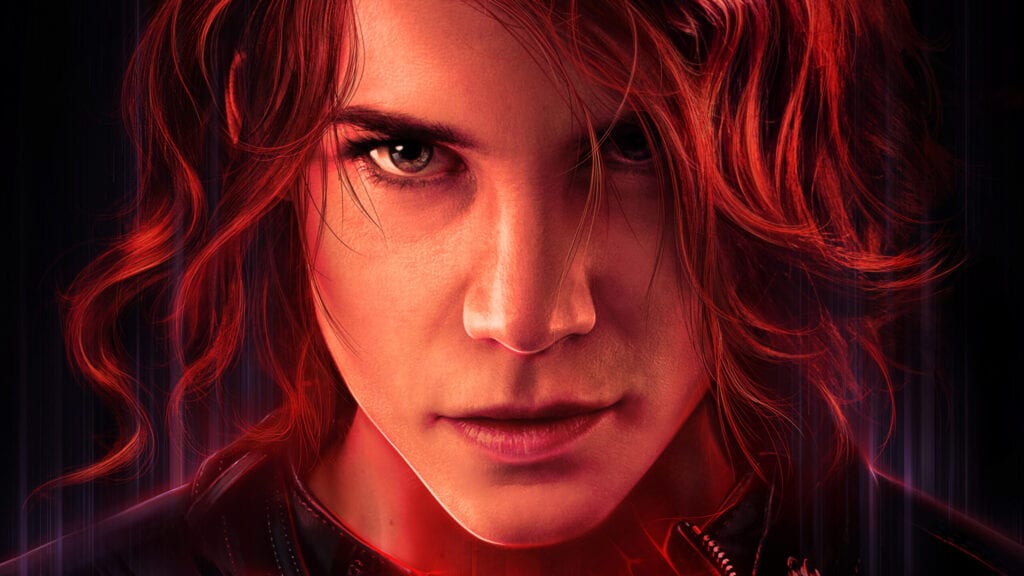

Counter-Strike: Global Offensive
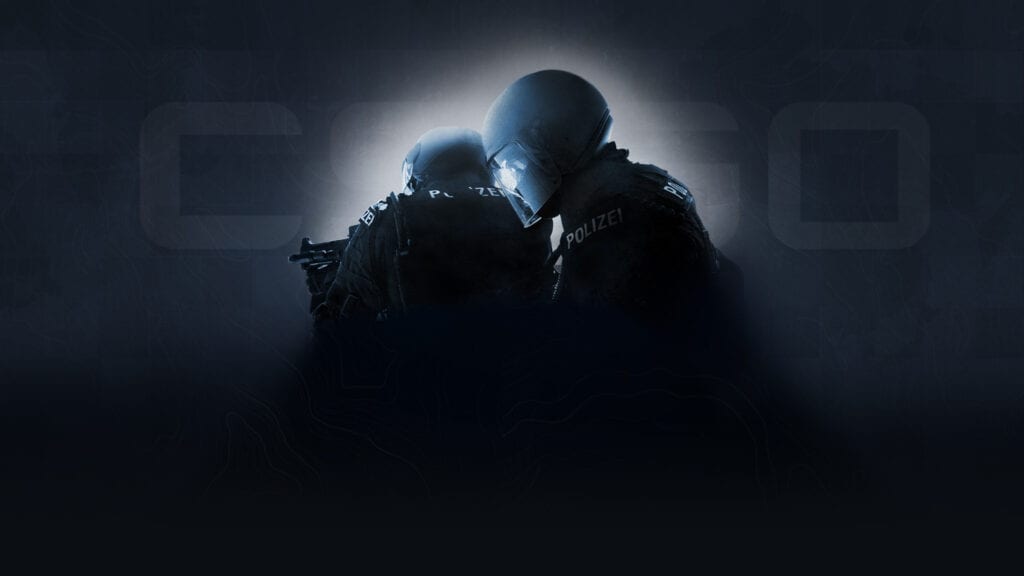

Destiny 2
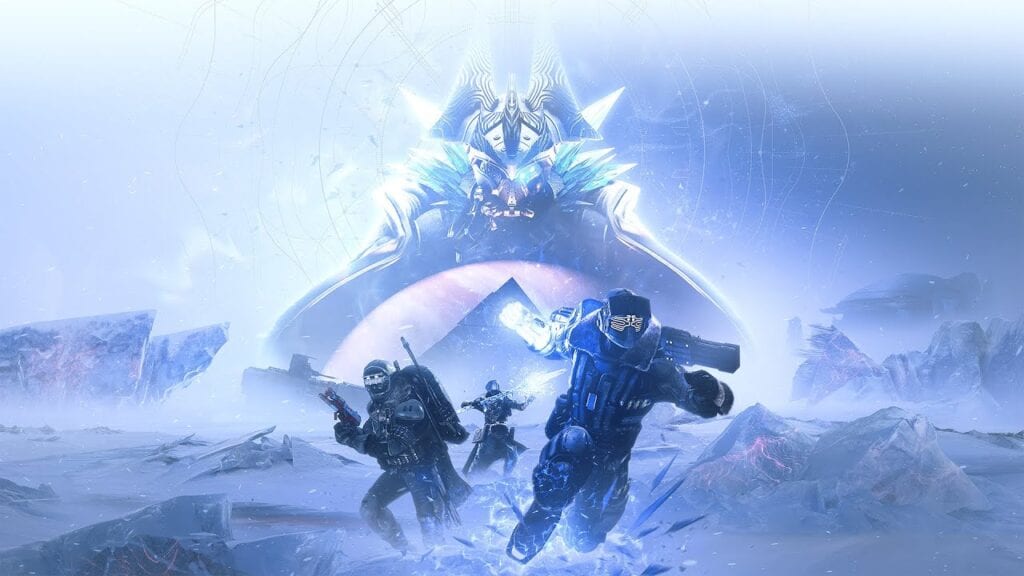

Far Cry 5
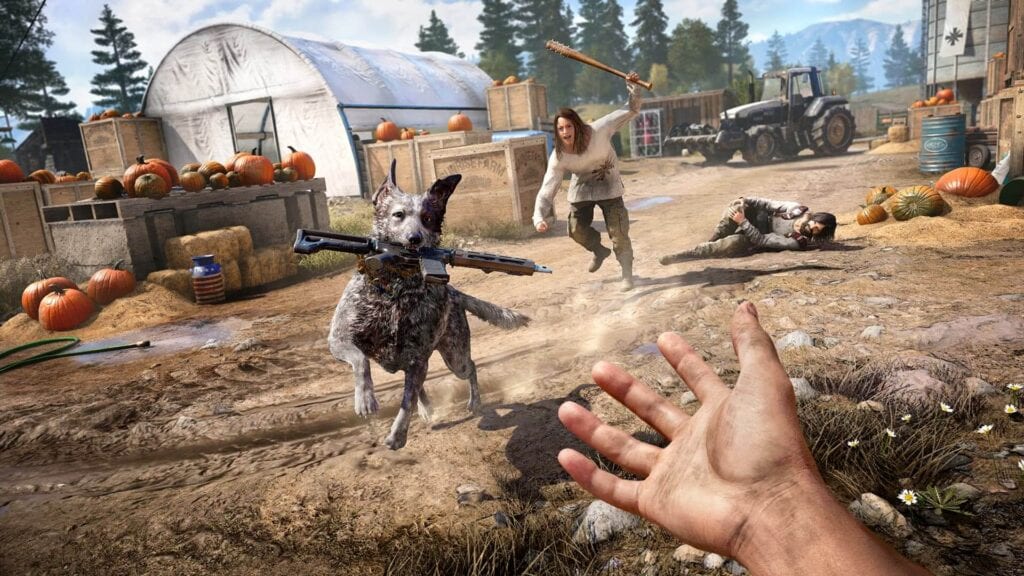

For Honor
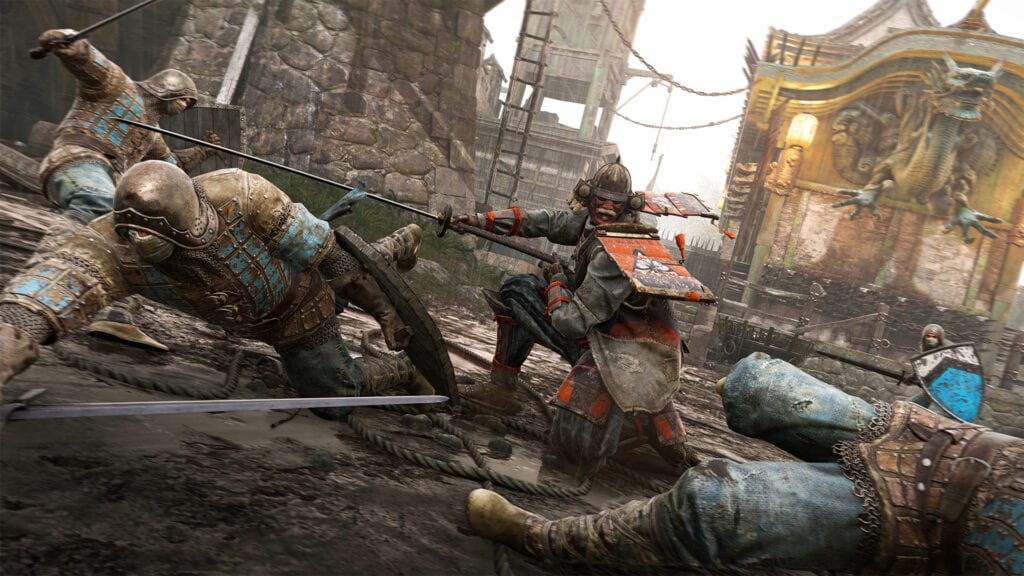

Horizon Zero Dawn


Red Dead Redemption 2
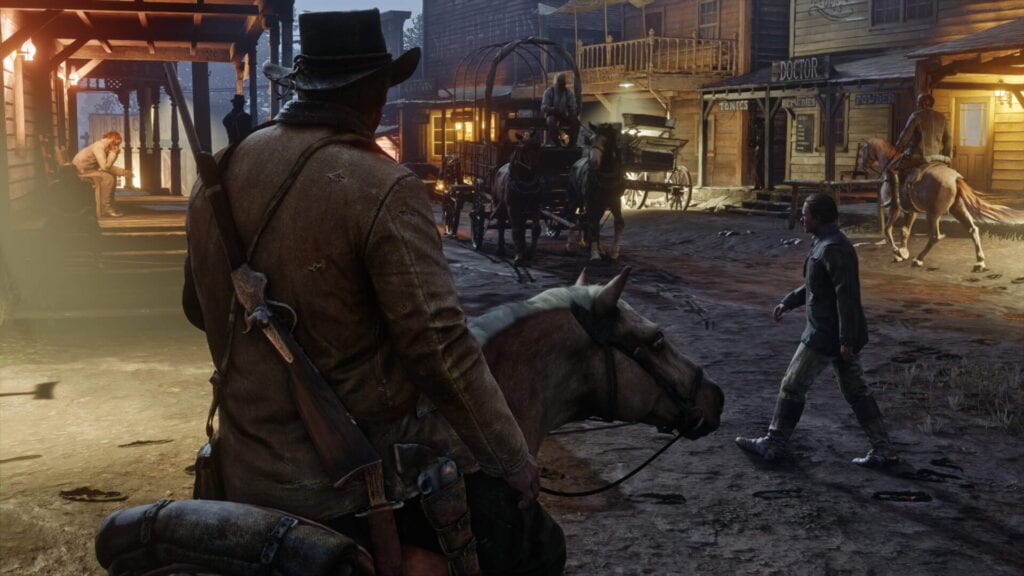

Remnant: From the Ashes
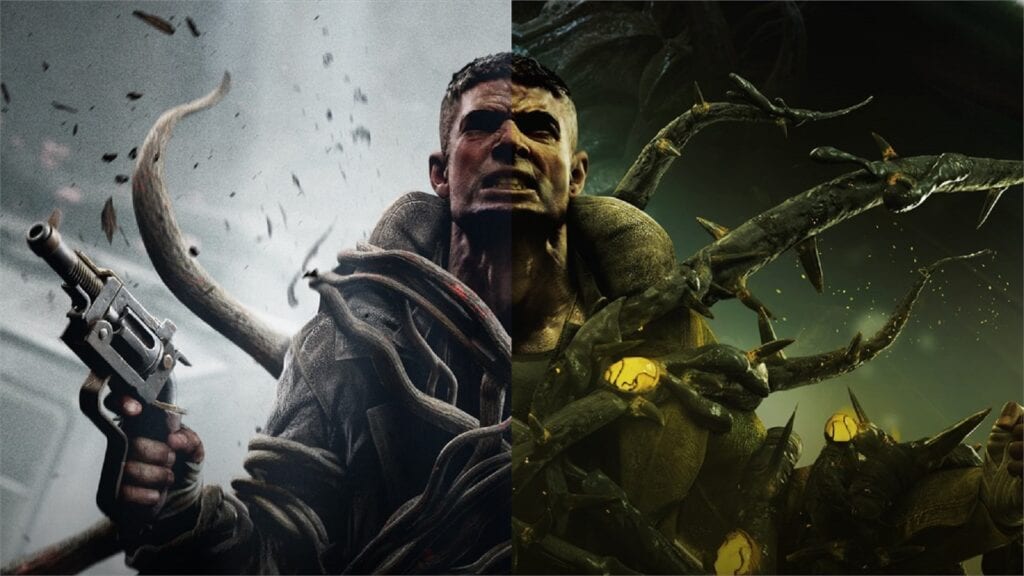
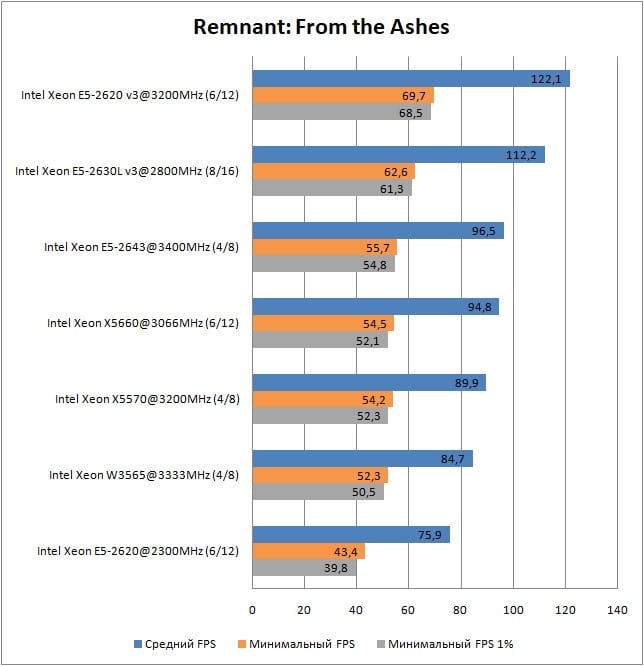
Shadow of the Tomb Raider
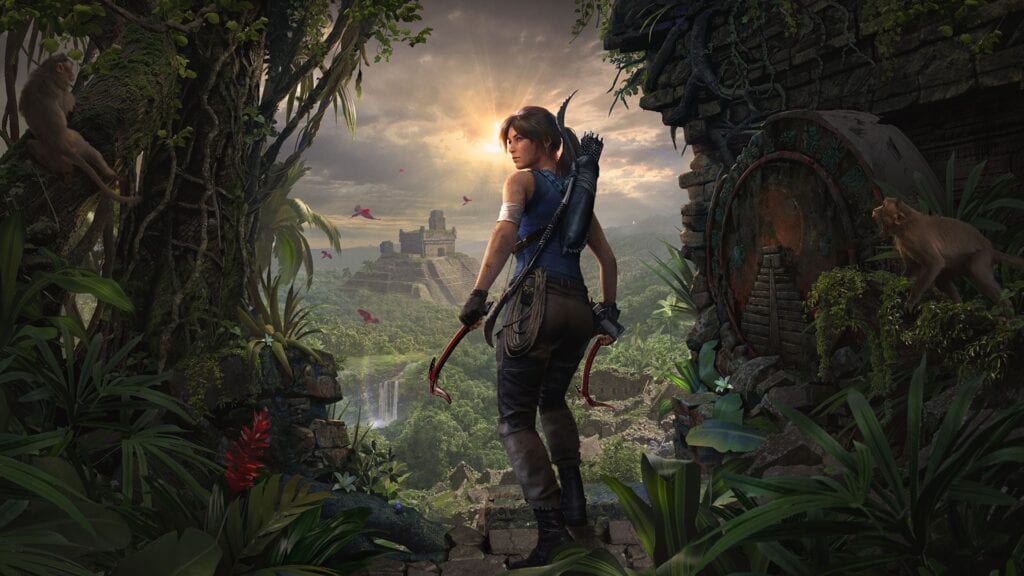
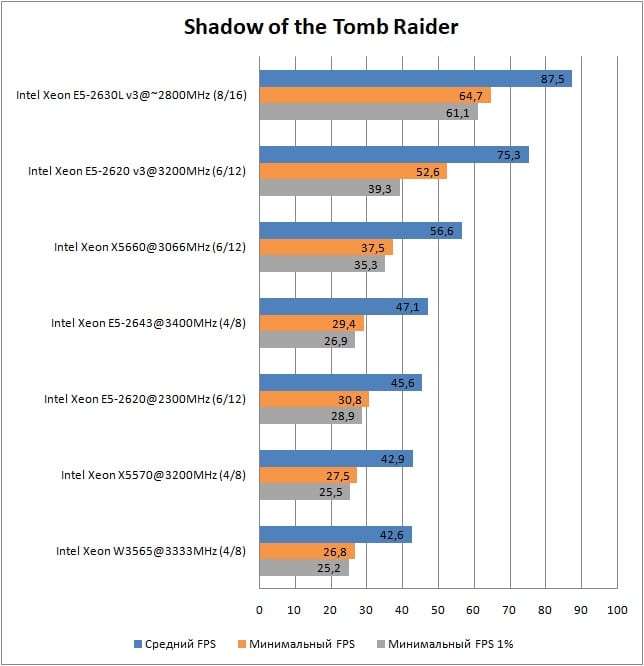
Tom Clancy’s The Division 2
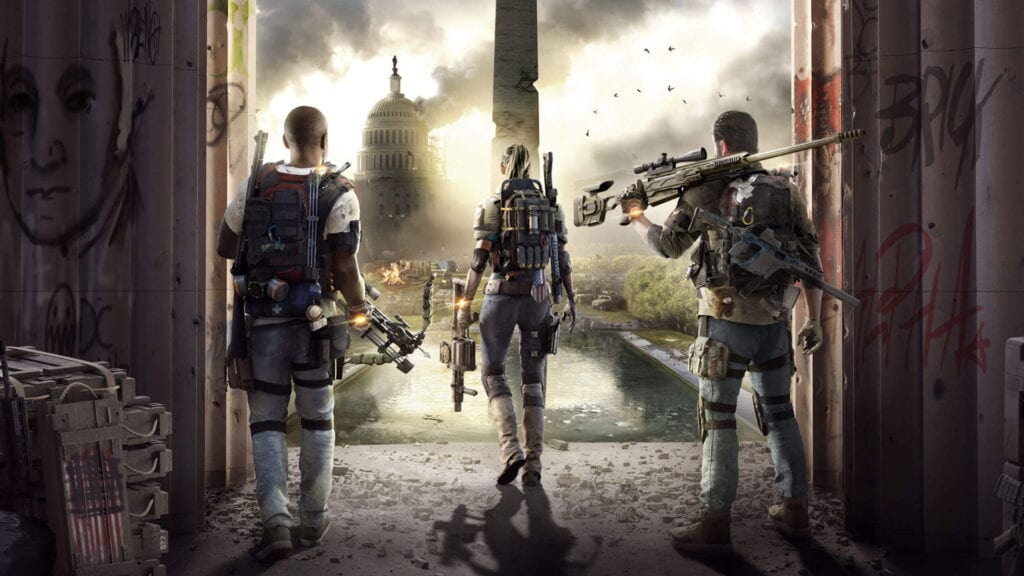
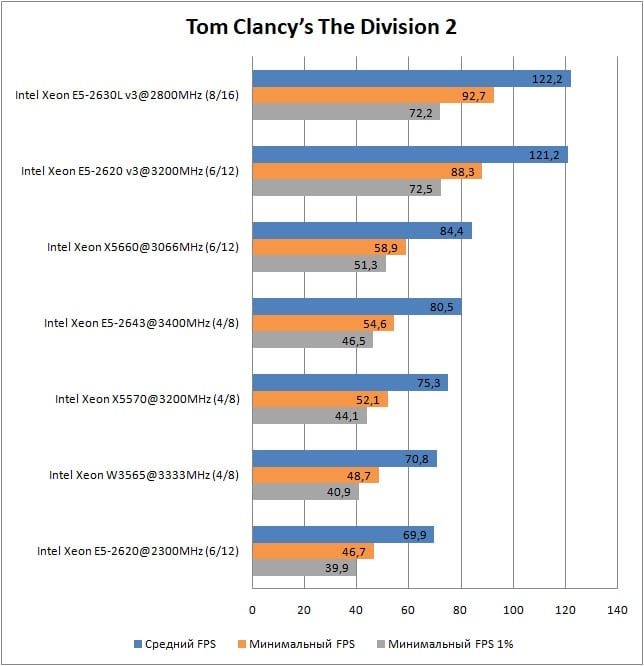
Watch_Dogs 2
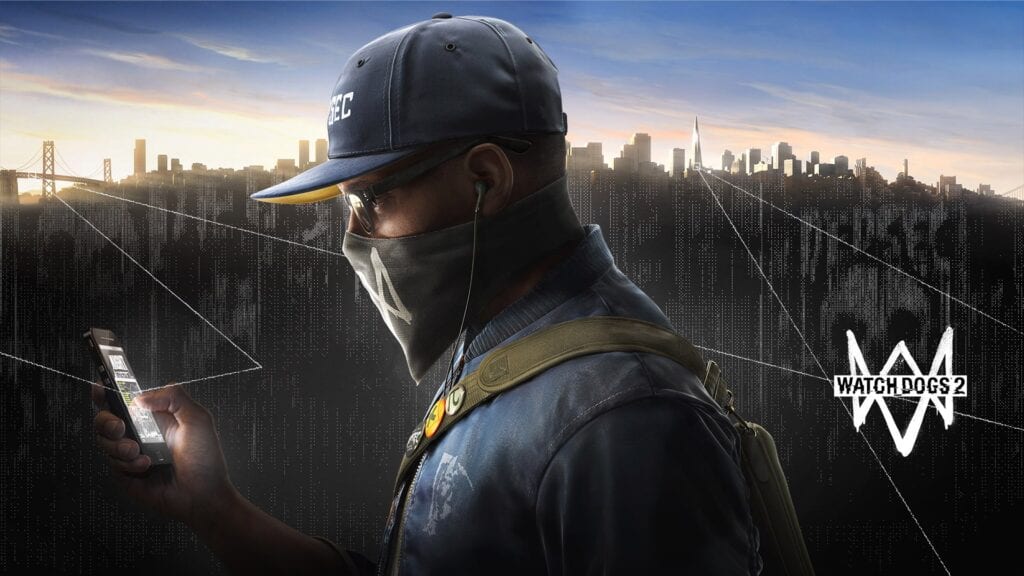
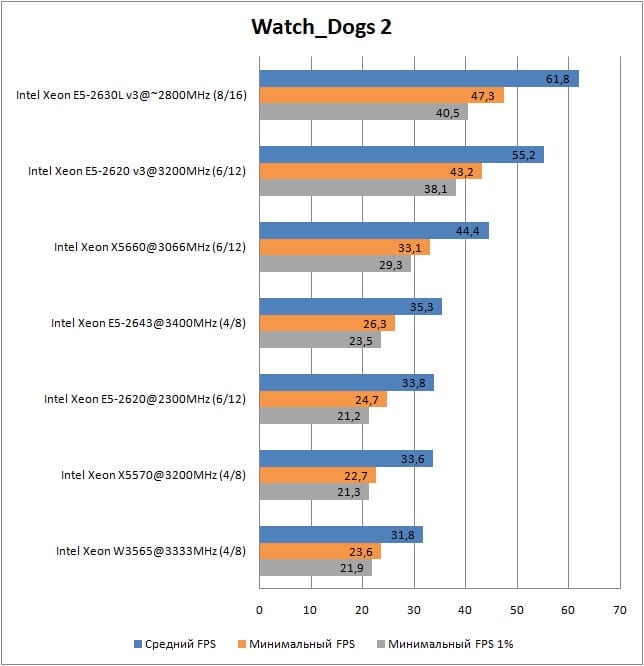
Well, in 9 out of 13 games, the slightly lower frequency Xeon X5570 chip was able to prevail and outperform its fellow W3565. In Control, the W3565 showed itself more confidently than the X5570, and in Shadow of the Tomb Raider and Watch_Dogs 2, both processors demonstrated virtually identical results.
| Game: | Xeon X5570 | Xeon W3565 |
| Assassin’s Creed Odyssey | + | – |
| Battlefield V | + | – |
| Control Ultimate Edition | – | + |
| Counter-Strike: Global Offensive | + | – |
| Destiny 2 | + | – |
| Far Cry 5 | + | – |
| For Honor | + | – |
| Horizon Zero Dawn | ||
| Red Dead Redemption 2 | + | – |
| Remnant: From the Ashes | + | – |
| Shadow of the Tomb Raider | ~ | ~ |
| Tom Clancy’s The Division 2 | + | – |
| Watch_Dogs 2 | ~ | ~ |
If we talk about the degree of advantage of the Xeon X5570 processor over the W3565, then it varies from 1.70% in FarCry 5, to an impressive 9.50% in the current part of Battlefield, but on average, it does not exceed 5%. Nevertheless, do not forget that the frequency of the X5570 is 133MHz lower than that of the W3565, and if they worked at the same speed, the gap between the X5570 and the W3565 would have been a little more significant.
| Game: | Advantage of X5570 over W3565: |
| Assassin’s Creed Odyssey | 7,60% |
| Battlefield V | 9,50% |
| Control Ultimate Edition | -2,20% |
| Counter-Strike: Global Offensive | 6,10% |
| Destiny 2 | 3,00% |
| Far Cry 5 | 1,70% |
| For Honor | 6,80% |
| Horizon Zero Dawn | 0,00% |
| Red Dead Redemption 2 | 6,10% |
| Remnant: From the Ashes | 5,90% |
| Shadow of the Tomb Raider | 0,00% |
| Tom Clancy’s The Division 2 | 7,10% |
| Watch_Dogs 2 | 0,00% |
Below is a video of testing the Xeon W3565 chip in games. Please note that for the above graphs, the FPS indicators were taken without “eating” some video recording performance. Therefore, in the video, the frame rate values are slightly lower than in the graphs.
Instead of a conclusion
In the end, my fears were confirmed – the memory controller of the Nehalem processors is not so technologically advanced and “licked out” to get a significant increase in performance from 1333MHz memory and 2666MHz L3 cache, and did not come true – in the same Battlefield 5, a chip with a high-frequency RAM and L3 was able to show almost 10% performance gain, while operating at a slightly lower frequency – 3200 versus 3333 MHz.
As for the performance of the Xeon W3565 processor, according to the results of today’s material, it becomes quite obvious that it is at an extremely depressing level, and the lack of support for AVX instructions literally puts an end to this CPU.
If this material was useful to you and you would like to see more similar articles on this resource, then please support our site on Patreon! The main goal of fundraising is to expand the component park and improve the quality of testing: replacing the HDD with a voluminous SSD, buying a capture card to reduce the impact of gameplay recording using ShadowPlay on the final results, and so on).
Also, I would like to express my special gratitude to the already signed patrons! Your support is extremely important to us!
